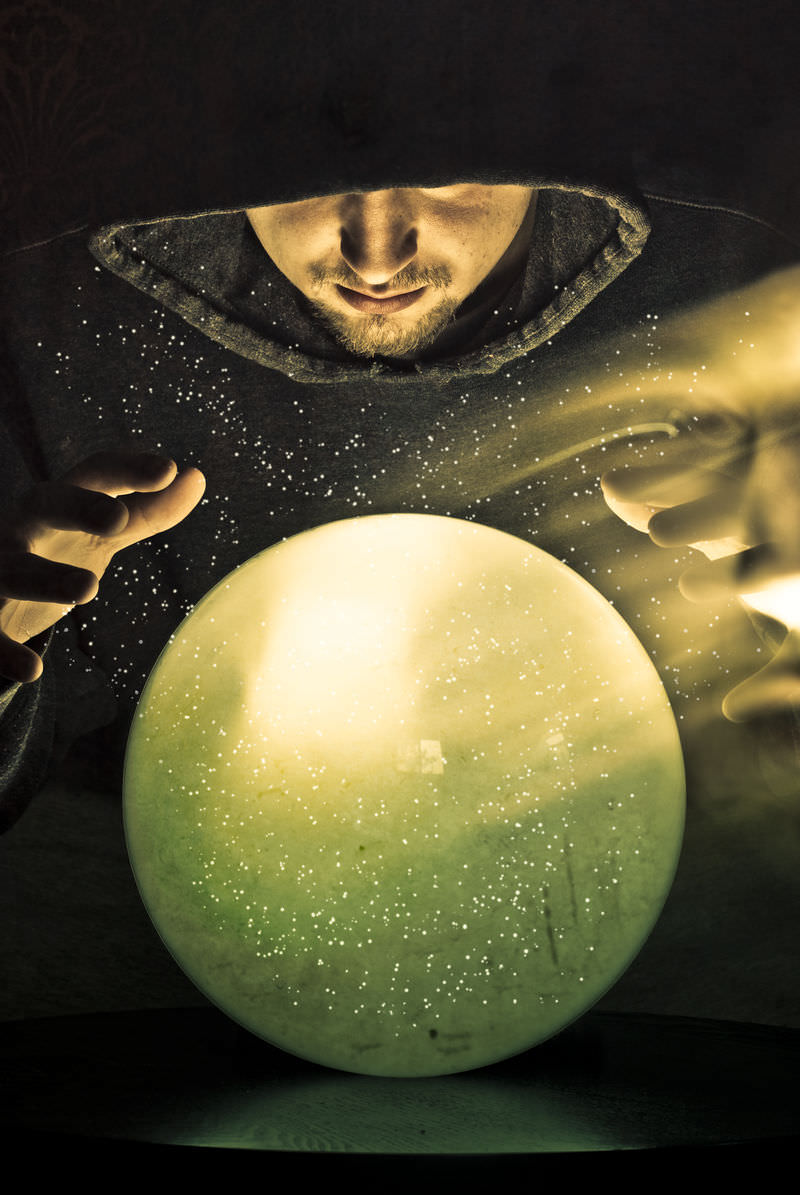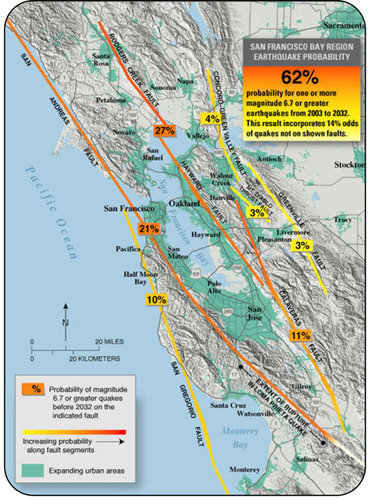6.19: Predicting Earthquakes
- Page ID
- 5419
What if you could predict an earthquake?
What would make a good prediction? Knowing where, when, and the magnitude of the quake would make it possible for people to evacuate. If you were right, you would be famous! But if you were wrong, many people would be angry with you.
Earthquake Prediction
Scientists are a long way from being able to predict earthquakes. A good prediction must be detailed and accurate. Where will the earthquake occur? When will it occur? What will be its approximate magnitude? With a good prediction, authorities could get people to evacuate. But if the prediction were wrong, a lot of money would be lost as people closed businesses and skipped work. Plus, people would be unlikely to believe the authorities the next time.
Predicting Where
Where an earthquake will occur is the easiest feature to predict. How would you predict this? Scientists know that earthquakes take place at plate boundaries. They tend to happen where they’ve happened before (Figure below).
This map shows earthquake probability regions in the United States.
Fault segments behave consistently. A segment with frequent small earthquakes will likely continue to have frequent small earthquakes. A fault segment with infrequent huge earthquakes will likely have infrequent huge earthquakes. The image below shows the probabilities of earthquakes striking along various faults in the San Francisco area (Figure below). The time frame is between 2003 (when the figure was made) and 2032.
The probabilities of earthquakes striking along various faults in the San Francisco area between 2003 (when the work was done) and 2032.
Predicting When
When an earthquake will occur is much more difficult to predict. Stress on a fault builds up at the same rate over time. So earthquakes should occur at regular intervals. But, so far, scientists cannot predict when quakes will occur even to within a few years. Around Parkfield, California, an earthquake of magnitude 6.0 or higher occurs about every 22 years. So seismologists predicted that one would strike in 1993. But that quake came in 2004—11 years late (Figure below).
Trying to predict an earthquake in Parkfield, California.
Earthquake Signs
There are sometimes signs that a large earthquake is coming. There may be small quakes, called foreshocks. These can occur a few seconds to a few weeks before a major quake. Unfortunately, foreshocks are not very useful for predicting large earthquakes. Many quakes do not have foreshocks. Also, small earthquakes are not necessarily followed by a large earthquake.
There are other possible signs before an earthquake. The ground may tilt. Ground tilting is caused by the buildup of stress in the rocks. This may happen before a large earthquake, but it doesn't always. Water levels in wells may fluctuate. This is because water may move into or out of fractures before an earthquake. This is also an uncertain way to predict an earthquake. The difference in arrival times of P-waves and S-waves may decrease just before an earthquake occurs.
Folklore tells of animals behaving strangely just before an earthquake. Most people tell stories of these behaviors after the earthquake. Chinese scientists have actively studied the behavior of animals before earthquakes to see if there is a connection. So far nothing concrete has come of these studies.
Actions can reduce the damage once an earthquake has started. Seismometers can detect P-waves a few seconds before more damaging S-waves and surface waves arrive. In this time computers can shut down gas mains and electrical transmission lines. They can initiate protective measures in chemical plants, nuclear power plants, mass transit systems, airports, and roadways. Just a few seconds can be tremendously valuable.
Summary
- A good prediction must indicate when and where an earthquake will take place.
- Fault segments behave the same way over time.
- Signs that an earthquakes may occur include foreshocks, ground tilting, water levels in wells, and the relative arrival times of P- and S-waves.
Review
- Why is it easier to predict where a quake will occur than when?
- List some of the signs that may predict earthquakes.
- Along which fault in the San Francisco Bay area is a large earthquake most likely to strike?
- The map of earthquake probability from the San Francisco Bay Area was made in 2003. How has the probability likely changed since there's been no major earthquake there in more than a decade?
Explore More
Use the resource below to answer the questions that follow.
- What happened on April 18, 1906?
- How fast is movement usually along San Andreas Fault? What is the rate of movement during a major quake?
- Why is it difficult to predict earthquakes?
- What information would a really great earthquake prediction give?
- What can provide a warning for earthquakes about 10% of the time? Why is this warning system not all that reliable?
- Why is monitoring the Earth from space useful? What does it tell scientists?





